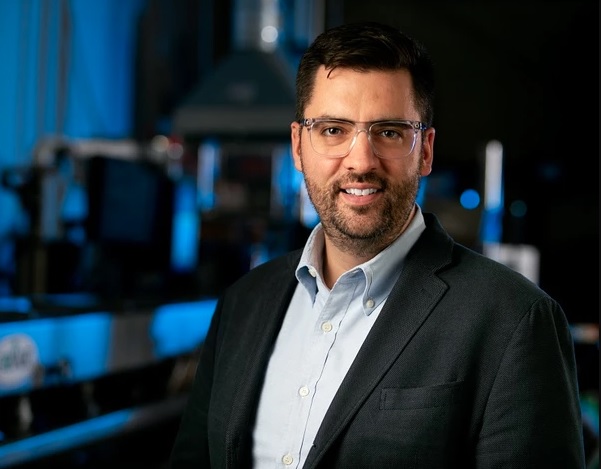Exclusive Interview: Essentium CEO On Innovation, Future Of Industrial-Scale Manufacturing — Part 1

![Blake Teipel, PhD, CEO and Co-Founder of Essentium Inc. [Image: Essentium]](https://images.squarespace-cdn.com/content/v1/509c281de4b0cd18c7335aab/1566572076834-H7M4K4ZRSXNX1474QT20/ke17ZwdGBToddI8pDm48kGNQqUfIjDsN6fyRoQQaL69Zw-zPPgdn4jUwVcJE1ZvWQUxwkmyExglNqGp0IvTJZUJFbgE-7XRK3dMEBRBhUpzlF3VffwIil0Vw9CrTVWegzcLW-bA3ra081PB2Fq7pzzqFUSoTsReG9Y3nvaqdbBw/blake+headshot.jpg?format=1000w)
Blake Teipel, PhD, CEO and Co-Founder of Essentium Inc. [Image: Essentium]
It’s been a tumultuous time for Texas-based Essentium lately; we catch up with the CEO for an exclusive chat about the state of things.
While much of the attention these days is on the lawsuit Jabil filed against Essentium in late June — and we’ll talk about that, too — that’s by no means the whole story. Or at least, it’s not the only story.
CEO and Co-Founder Blake Teipel, PhD, opens up about 3D printing, the role of innovation, open business models, and customer choice in unlocking the future of industrial-scale manufacturing.
Update On Essentium
We started our chat with an update on Essentium as a company.
Inherent in the DNA of Essentium since its inception is one simple word: Innovation.
“Litigation is an example of what can happen when innovation is stymied,” Teipel said in opening. “Additive manufacturing is obviously an innovative space, with people playing by the rules. And that’s what we’ve always done. When we focus together on contributions to the space, I think we can move the industry forward, together, as a whole.”
With that as an introduction, we moved into the actual business of the company. They’ve started shipping their HSE 180•S 3D printer, with a couple already out the door and another 20-30 systems heading to customers “in the near term” before ramping up even further.
Shipping in and of itself, though, Teipel noted, isn’t newsworthy; the real update there is “we’re doing what we do, and we’re fulfilling our commitments to the marketplace.” The last time we sat down in person, at RAPID + TCT this spring, Teipel noted that shipping would begin this summer as, indeed, has come to pass.
He said that the HSE system has “received a pretty resounding response from the market” and, indeed, we’ve named it and the company behind it as one to watch. The response, from Teipel’s perspective, comes down to one simple fact:
“It’s so important to have the customers themselves be able to innovate, and this is especially true in the extrusion space,” he said.
As we’ve discussed countless times, it’s great for a 3D printer manufacturer to be innovative — but ultimately they’re creating a tool. It’s the users of that tool who will be the ones doing the ‘real work,’ and Teipel and his team recognize that. They see the HSE system as a platform to enable that work, offering more versatility to users than previous solutions.
On the materials side, Essentium has also just launched four materials.
All four are electrostatic discharge (ESD) safe, continuing with the company’s mission to “provide materials useful on the factory floor and in applications.” These new materials are all different Shore hardness, offering a wider range of capabilities. They all are also “setting up for FlashFuse.”
FlashFuse was our first introduction to Essentium, back in early 2017, as the company initially positioned itself to ‘change the physics of 3D printing’ with the ‘electromagnetic welding’ capability. While HSE has taken the headlines over the last year or so, the company’s roots in materials science — their original Twitter handle was @MaterialsGenius — run deep and are by no means neglected. FlashFuse, Teipel assured me, is “still in the pipeline and coming soon.”
The Future Belongs To The Customers
And whatever comes through these pipelines, the goal is clear: it’s for the users.
“Materials and hardware innovation have customer innovation going really strongly, and we’re seeing a resounding response. But that sounds like an ad for Essentium and I don’t want that,” Teipel said with a laugh. “I want to talk about our customers. They’re in the motor space, in home goods, appliances, footwear, aerospace; it doesn’t matter the industry, everyone is saying, ‘I”m ready for additive to do more, to push my innovation cycle further down the pipeline.’ In order to do that, they’re disrupting some of their own legacy workflows, and disrupting their competitors’, and they’re growing and thriving.
“It’s not just Essentium here; the future belongs to the customers. It’s so important that customers be allowed to innovate — not just by HSE, there are other great new platforms out there, like Origin’s, and others that allow open materials certification that allow customers to have their hands on their own steering wheel.”
Sure, it’s easy to dismiss some of this because of buzzwords “innovation” and “disruption” — but, looking beyond the buzziness, there’s real depth to this vision.
Advanced manufacturing options are disrupting industry today, and workflows are changing. How, and to what extent, will ultimately be up to the customers — and for them, it depends on the tools they have.
In part two, we’ll dig more into the challenges currently facing Essentium.
Via Essentium
